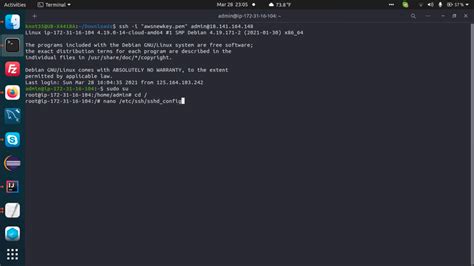Root access in Unix-like systems has always been a hot topic of debate among system administrators and security professionals. Traditionally, the ‘sudo’ command has been the go-to tool for gaining superuser permissions without logging in as root. However, a recent thought-provoking experiment suggests using SSH (Secure Shell) as an alternative method to obtain root-level permissions. This shift from ‘sudo’ to SSH might seem straightforward, but it opens up a Pandora’s box of both advantages and challenges that are worthy of in-depth discussion.
One of the central arguments for using SSH over sudo is the perceived increase in security. By eliminating the need for a suid (set user ID) binary, the attack surface is ostensibly reduced. The sudo binary, being exposed to untrusted users, brings a risk where environmental factors controlled by the user could exploit vulnerabilities. In contrast, SSH operates through a network layer, isolating the risk to secure data transfer over a socket. This distinction could indeed make SSH a more robust alternative in theory; however, the real-world application of such practices demands a nuanced look at potential vulnerabilities and the overall security posture.
Critics of this approach are quick to point out several caveats. One of the primary concerns is that running an SSH daemon, even over a Unix socket, introduces another layer of complexity and potential failure points. For instance, if the SSH service fails to start at boot or encounters a configuration error, the system could be rendered inaccessible, except through alternate boot methods or recovery media. Considering the foundational principle of maintaining system uptime and accessibility, this is not a trivial concern. Therefore, while SSH might excel in certain security aspects, it also inherits a different set of operational risks which need to be evaluated.
Moreover, the flexibility and control offered by sudo cannot be overlooked. System administrators have long benefited from the granular control sudo provides. By editing the sudoers file, they can specify exactly which users can execute which commands, with what arguments, under what conditions. This fine-grained control enables a least-privilege approach, drastically reducing the risk of unintentional or malicious misuse of root privileges. In contrast, the SSH-based approach can be somewhat limiting unless similar mechanisms are implemented, which could add to administrative overhead.
Adding to the complexity is the argument surrounding auditability and accountability. With sudo, it’s relatively straightforward to keep logs of command executions, which is crucial for incident response and compliance requirements. Tools like auditd and pam_tty_audit can be used to track activities comprehensively. SSH, on the other hand, would require supplementary solutions to achieve the same level of auditability, potentially complicating the operational landscape further. Considering that security isn’t just about preventing unauthorized access but also about being able to track and respond to incidents, this aspect cannot be underestimated.
Another pivotal point is user management, especially in environments requiring collaborative administration. SSH key management, particularly with SSH certificates or solutions like Hashicorp Vault, can become complex and unwieldy. Sudo simplifies this by utilizing group memberships and a central configuration file. Without structured processes for issuing, managing, and revoking SSH keys, the system could become even more vulnerable. Some practitioners argue that prompt and orderly key rotation can mitigate this risk, but it demands a disciplined and well-documented procedure.
Lastly, one must consider the future of system administration tools. The emergence of alternatives like doas and systemd-run0 highlights that while sudo has its limitations, it continues to evolve alongside new methodologies. Each tool brings its approach to balancing security, usability, and flexibility. The ongoing discussions indicate that no single solution—be it sudo, SSH, or a novel combination—can claim absolute superiority. Instead, the choice often boils down to the specific needs, expertise, and security paradigms of the organization in question.
In conclusion, while the idea of using SSH as a sudo replacement is intriguing and has certain merits, it is not a panacea. It prompts us to rethink traditional approaches and helps evolve our understanding of secure privilege escalation. Yet, its adoption would require careful consideration of all associated risks and operational impacts. The discussions within the sysadmin community reflect a shared goal: achieving secure, efficient, and manageable systems. As with any significant shift in technology stack or operational methodology, a balanced view and phased experimentation, combined with robust fallback mechanisms, would be prudent steps towards innovation in this space.


Leave a Reply